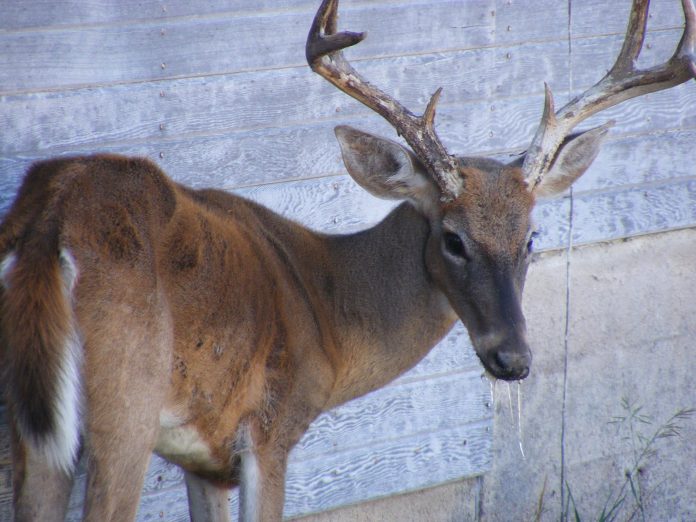
The Texas Parks and Wildlife Commission will consider proposed enhanced chronic wasting disease surveillance and containment zones during its meeting later this month.
While CWD has not been isolated in any cervids in the Rio Grande Valley, the proposal before the commission would extend containment zones in Jim Wells, Live Oak and McMullen counties in South Texas.
Chronic wasting disease is a fatal malady that afflicts deer-like animals. First discovered here in free-ranging deer in the Hueco Mountains in West Texas in 2012, the most recent cases of the disease have occurred in captive deer-breeding facilities, which frequently ship deer to other facilities.
The proposal for the new zones will, if approved, enhance efforts to monitor and contain CWD in portions of Bandera, Duval, Jim Wells, Kimble, Live Oak, McMullen, Medina and Uvalde counties ahead of the upcoming hunting season.
As of last month, 371 captive or free-ranging cervids — including white-tailed deer, mule deer, red deer and elk — in 14 Texas counties have tested positive. First recognized in 1967 in captive mule deer in Colorado, CWD has since been documented in captive and/or free-ranging deer in 30 states and three Canadian provinces.
The proposal for commissioners includes creating a containment zone and extending the existing surveillance zone in Kimble County, extending an existing containment zone in Bandera, Medina and Uvalde counties and creating a surveillance zone in portions of Duval County, Jim Wells, Live Oak and McMullen counties.
Containment zones are used in areas where CWD is known to exist, while surveillance zones cover areas at high risk for CWD.
The requirements for hunters are the same for both zones and consist of mandatory sampling of harvested deer and a restriction on moving whole carcasses out of the zones. This means animals must be quartered before leaving the zone and brought to a Texas Parks and Wildlife Department check station within 48 hours of harvest.




